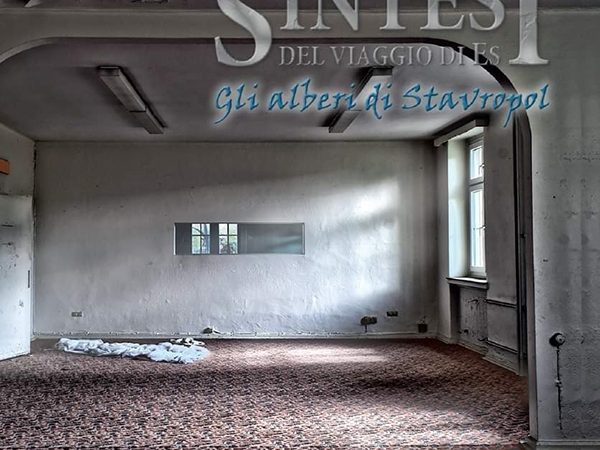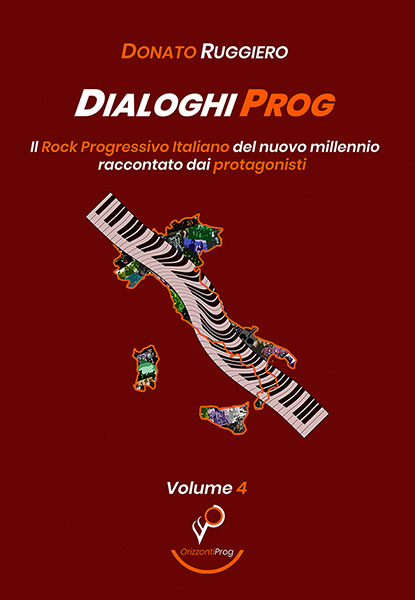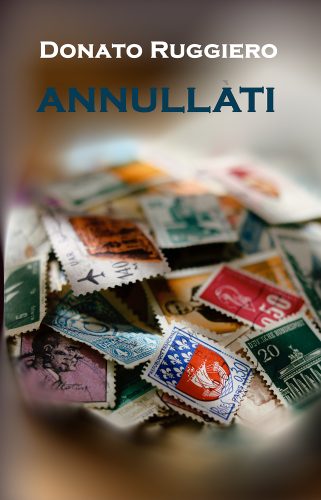Fistful of planets part II (2021)
Self-production / Co-production Mattias Olsson
Six years after the first ” fistful of planets “, Elisa Montaldo is ready to take us on her new imaginary journey through an unknown galaxy… this time, however, it will not be a “simple” sound experience, but a totally “immersive” one.
As a kind of “reaction” to the period of forced stop due to the pandemic, the songs of Fistful of planets part II came out like a river, some born long ago in different places but remained in a state of “musical embryo”, others written and recorded in one day (read the Italian interview). Not only that, during her journey, Elisa gradually realised how important it was to have something else tangible, besides the music (and the physical record), elements that could help the listener to understand the deep meaning. And so, from the images of Delfilm to the perfume of Strega del Castello (the two artists who collaborated with her), passing, of course, through the music, what Elisa Montaldo offers in the limited-edition box is a true “multi-sensory experience”.
One of the most fascinating and magical elements of the album is the story of the meeting with Monsieur Attala, a gentleman in his nineties, a music lover and amateur composer of poems and operettas, who was a guest at the hotel where Elisa works. He was struck by my way of playing the piano, emotional and pure in his opinion, and gave me the score of the “Valse des Sirènes” with a comic book ( wonderful!) on the legend of the siren Ikèa of Montluçon, telling me that he had written this adaptation of the legend and that I could use this music and play it. I immediately thought it was an almost magical coincidence, because at that time I was developing the idea of starting “Fistful” (read the Italian interview). And “Valse des Sirènes” is the (musically vintage) element that acts as the album’s “alpha and omega”. In the middle, everything is magnetic, enchanted, ethereal, fascinating, with really deep lyrics that, besides being listened to, have to be read and understood.
In Fistful of planets part II the message of “space” is clearer: my aim is to open the listener’s mind and give it a new space, because I believe that we are all suffocating in this reality and we are conditioned more and more to stifle our instincts and our intelligence. I want to believe that this music can somehow spark and awaken in people the will to react to the present and improve the world around us.
And the line-up of collaborators is really rich and top-notch. Alongside Elisa (piano, vocals, keyboards, effects, autoharp, mix), we find Matteo Nahum (vintage orchestra arrangement, Paolo Tixi (drums), Hampus Nordgren Hemlin (mellotron, bass, electric and acoustic guitars, celeste, vibraphone, tubular bells, Roland Vocoder plus VP-330, kantele), Mattias Olsson (percussion, drums, clap trap, drum machines, mellotron, Casio Sk-5, Ondes Magnetique, Gizmotron bass, random tone generator, Mother modular system, Hohner bass 2, Kaoss pad), Steve Unruh (flute), Rafael Pacha (classic guitars), Nina Uzelac (cello), Jose Manuel Medina (string section arrangement, orchestral arrangement), Ignazio Serventi (classical guitar, guitars), David Keller (cello), Yuko Tomiyama (reciting vocals), Maitè Castrillo (reciting vocals), Stefano Guazzo (saxophone), Tiger Olsson (vocals in Into the black hole) and Diego Banchero (bass).
The chaos that becomes light, this is the start of Valse de Sirènes (chanson): distorted voices and electronic “noises” that find their fulfilment initially in an old music box and then in a “muffled” French song of yesteryear, coming from an old gramophone, a bit Edith Piaf, with the vintage orchestra arrangement created by Nahum that makes it all very evocative.
Floating / Wasting Life. Sounds that float in the air, enveloping, hypnotic, bewitched, a “superior” state that is reached as the seconds pass before Elisa’s piano takes over, bringing with it a new mood, darker and more melancholic. Then Hemlin’s guitar and vocals change the picture by launching the inspired singing of the “hostess” and also the sound substrate becomes more articulated, remarkable, changing a little further, becoming velvety, despite the marching drums. And the final vocal games are really fascinating. […] Floating into the dark space / you find yourself alone / “when all of this began? Will I come back home?” / Maybe it’s all a joke / or maybe all of this is true? / don’t you see, all these questions lead to you! / So, try to find a meaning / listening to my voice / come on and wake up so that / you can make a choice / So let’s stop wasting life […].
Earth’s Call has a sacred atmosphere, with the long cello soliloquy performed by Nina Uzelac, solemn and touching, enveloped by ethereal and magnetic “sound carpets”. And even when new performers take over (keyboards and rhythms), the underlying feeling does not change but only takes on a new aspect. And Unruh’s enchanted flute, a bit like Jerry Cutillo, comes later to add an enchanted and Canterbury-like touch to the whole, before the picture becomes emotionally dense again.
Elisa Montaldo‘s angelic voice welcomes us to We are magic. She is surrounded by an eighties atmosphere, carefree, enriched by dreamy details (and a particular vocal effect, the vocoder used by Hemlin). And so the song flows along nicely. […] If you’re worried for your choices / if you don’t find peace in your mind / just relax and drink a glass of wine […].
A whispered piano and tiny Mediterranean details are the elements that introduce us to Haiku. Then the nature of the Japanese verses recited by Yuko Tomiyama give us an inkling that everything is going to change. And so it is, but not completely, with Maitè Castrillo picking up the “baton” from Yuko and showing us the way (in French), with a caressing, multi-layered atmosphere that softly envelops the listener. And that’s not all, because Serventi’s strings, in the same emotional vein, then take the stage and advance undisturbed, while all around is evanescent.
Esoteric mood, a bit OAK, at the beginning of Feeling/nothing/into the black hole, with its superb flute/piano interlacing in the foreground. And the two protagonists grow in intensity, giving way to other performers such as percussion and sax. And then everything becomes ambiguously dark: if the sounds give this sensation, Elisa’s enchanted singing keeps everything “under control”. But the song is far from its conclusion, and here Montaldo throws herself completely into a decidedly experimental mix that blends psychedelia, world music à la Aktuala, Battiato-like solutions (see the ending of “Shakleton”), Jacksonian sax, obviously a lot of chameleon-like piano, and numerous other pieces that make this an extraordinary moment. Only at the end, the antique song of the beginning of the album returns, distant, evanescent.
Wesak. A small piano interlude: minimalist, very sweet, intense.
Washing The Clouds. Almost continuing with the same “inner flow” of the previous track, Elisa welcomes us again with her delicate touch on the piano. Almost without “wanting to disturb”, the singing comes in and everything becomes sublime, dreamy (at times reminiscent of Barbara Rubin’s works). And even when the piece opens towards the light, the sensation is that of still living a dream, with the piano/voice combination completing each other perfectly. And when Elisa puts aside her singing, Serventi’s distorted and intense solo attracts the whole scene. But he is not alone and the “dress” created by Elisa Montaldo‘s hands and mind deflagrates peacefully in the last minutes of the episode. Magnificently. […] As every morning when the sun will rise / to warm your sleepy eyes, / I will be there to find the meaning of / the shadows, the rainbows, the ghosts / and put the clock in time.
The beginning of Valse Des Sirènes (grand finale) is quite different, a waltz, but in a Montaldian key, and therefore intimate and without frills. Then the theme is enriched with cinematographic elements, projecting us into a Fellini movie. And everything is well thought out, thanks above all to the precise and imaginative contributions of the orchestra. And the last minutes are decidedly “off course”, with something that sounds like a Battiato-esque synth as the only sound element while Elisa shows us the inner path to follow.
“At the service” of Il Tempio Delle Clessidre and other projects, or as a soloist, Elisa Montaldo confirms once again, if it were needed, her talent, her art and her elegance.










Leave a Reply